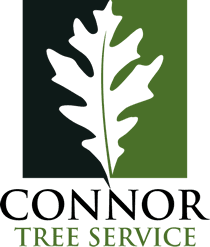SUMMARY:
With the growing season concluded and the colder months upon us in the Lowcountry region of South Carolina, Connor Tree Service warns local property owners about overpruning, a common mistake in tree care that puts them in danger of stunted or irregular growth. Continued overpruning can kill a tree and leave structures, vehicles, and people in the area vulnerable to injury if a weakened tree falls during a storm. Hiring certified arborists for pruning of trees ensures that pruning percentages are correct and keep trees healthy and strong for many decades.
FOR IMMEDIATE RELEASE:
Connor Tree Service sends teams of certified arborists throughout the Lowcountry to serve property owners who want to keep their trees as healthy as possible. They not only provide expert pruning services, but also inspect trees to uncover any hidden infestations of insects or fungus that may kill a tree in time. As they travel throughout the region, these arborists notice many examples of one of the most common tree care mistakes–overpruning.
While most property owners understand the basic concept and importance of pruning their trees, there are nuances to the process that are much less well understood. Unfortunately, even many tree service providers do not give sufficient attention to best pruning practices. A casual or misinformed approach to pruning can actually leave a tree in worse shape than it was before the process, vulnerable to a number of different threats and less able to withstand the weather and infestation threats that it faces throughout the year.
The primary reason that overpruning damages trees is that a tree’s foliage (leaves) is, along with the root system, one of its primary systems for generating sustenance. An aggressive pruning that removes the bulk of a tree’s leaves leaves the tree unable to conduct the critical photosynthesis process that keeps it strong and enables it to grow. “Topping,” an attempt to remove the top limbs and leaves of a tree to control growth, is one of the worst mistakes in this regard, as the leaves at the top of the tree are the most important for collecting sunlight and rainwater.
Another issue is the natural reaction of the tree to the loss of its foliage. When pruning removes most of the branches and leaves that a tree had developed, it responds by devoting its resources to immediately sprouting more branches and leaves. This creates sprouts in the interior of the tree’s structure, not at the exterior of a large, balanced crown. Instead, an educated and expert tree trimmer will conduct minimal trimming, removing limbs and foliage that are impacting the tree’s balance and health while keeping healthy growth intact.
Connor Tree Service’s certified arborists understand and carefully follow the best practices for pruning, set forth by the International Society of Arboriculture. Tree owners in the greater Charleston, SC area who want to preserve the health and continued growth of their trees can get in touch with the company through their website, www.connortreeservice.com
